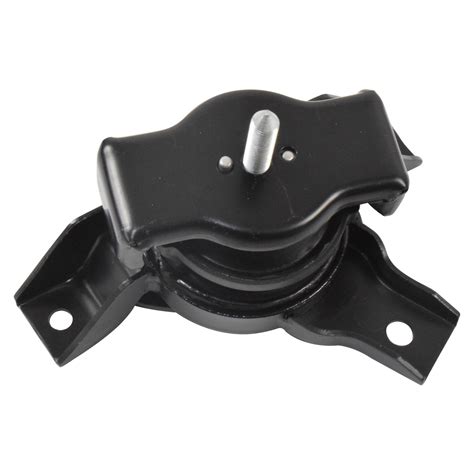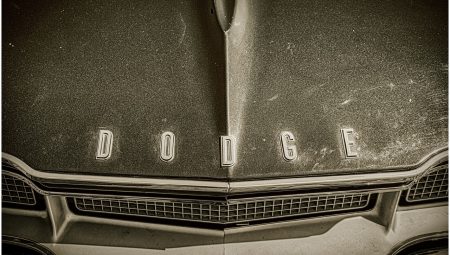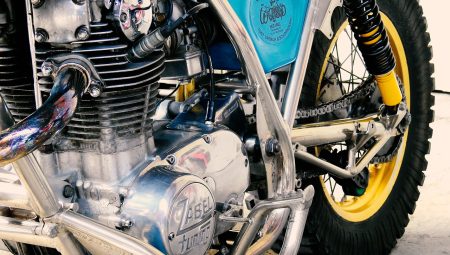Discover the role of engine mounts, signs of wear, maintenance tips, and the importance of timely replacements for optimal vehicle performance.When it comes to vehicle performance and safety, one crucial yet often overlooked component is the engine mount, particularly the front engine mount. This vital part acts as a secure connection between the engine and the vehicle’s chassis, allowing for optimal engine stability while minimizing vibrations. Understanding the function of front engine mounts, as well as the signs of wear and tear, is essential for any car owner. Not only can worn mounts lead to undesirable noise and vibration, but they can also impact handling and safety. In this blog post, we’ll explore what engine mounts are, the importance of keeping them in good condition, and provide tips on proper maintenance and when to replace worn mounts. Buckle up as we delve into the world of front engine mounts and their significance in vehicle performance!
What is an engine mount?
An engine mount is a crucial component found in most vehicles, playing a vital role in securing the engine to the chassis while simultaneously providing support and cushioning to absorb vibrations and impacts that can occur while the vehicle is in motion. This component is typically made from a combination of rubber and metal, which allows it to effectively dampen vibrations and prevent excessive movement of the engine, thereby contributing to a smoother ride and enhancing the overall performance of the vehicle.
Essentially, the engine mount serves as a link between the engine and the vehicle’s frame, ensuring that the engine remains stable and properly aligned during operation, which is particularly important as the engine operates at various speeds and loads. Without properly functioning mounts, the engine could experience unwanted movement, leading to potential damage to the engine itself and other surrounding components, such as the transmission and exhaust system.
Furthermore, the design and construction of engine mounts can vary significantly between different types of vehicles, with factors such as engine size and type of drivetrain configuration influencing the specific mount design required to effectively perform its function. The presence of these mounts not only affects how the engine performs but also impacts the overall handling characteristics of the vehicle, making them indispensable components in automotive engineering.
Function of front engine mounts
The front engine mounts serve a pivotal role in automotive engineering, effectively securing the engine to the vehicle’s chassis while simultaneously minimizing vibrations and absorbing shocks that could compromise both the vehicle’s performance and the comfort of its passengers. As the engine operates, it produces significant levels of torque and vibrations, which if left unchecked, would lead to excessive wear on various components. The front engine mounts are specifically designed to mitigate these effects by utilizing robust materials that can withstand varying engine loads and temperature fluctuations.
Moreover, an often-overlooked function of front engine mounts is their contribution to overall vehicle alignment and handling, where any misalignment can lead to an impact on steering responses and tire wear, thus further emphasizing the importance of these mounts in maintaining not only the vehicle’s structural integrity but also its driving dynamics. When the front engine mounts are functioning optimally, they allow the engine to move in conjunction with the vehicle without causing undue stress on adjacent components, facilitating a smoother ride.
In summary, the front engine mounts are not just simple connectors; they are vital components engineered to provide stability, reduce noise and vibrations, and align the engine properly within the vehicle framework, ensuring that a harmonious relationship exists between the engine’s power output and the vehicle’s overall performance. Neglecting the condition of these mounts could lead to more serious issues down the line, making it imperative for vehicle owners to be aware of their importance and to conduct regular inspections to ensure they are in prime condition.
Common signs of front mount wear
As vehicles age, one of the critical components that can begin to show signs of wear and tear is the front engine mount, which serves a significant purpose in stabilizing the engine and minimizing vibrations that can affect the overall driving experience; therefore, recognizing the common signs of front mount wear is essential for ensuring the optimal performance of your vehicle and avoiding more extensive damage.
One of the most noticeable signs that your front engine mount may be wearing out is an increase in vibrations felt throughout the cabin, particularly during acceleration or deceleration, as these vibrations can rattle the dashboard and make your ride uncomfortable, which is often caused by the mount becoming too soft or cracked, resulting in insufficient support for the engine; in addition, if you start to hear clunking or thudding noises when shifting gears or hitting bumps in the road, this could indicate that the mount is no longer securely holding the engine in place and needs immediate attention.
Another indicator of front mount wear is if the engine appears misaligned or tilted within the engine bay, which can be checked by visually inspecting the position of the engine relative to the frame of the car; an increased engine movement, noticeable during hard acceleration or braking, is also a red flag that the front engine mount is failing, making it essential for vehicle owners to pay close attention to these signs to take proactive measures in replac
Importance of replacing worn mounts
The importance of replacing worn mounts cannot be understated, as these crucial components in your vehicle play a fundamental role in ensuring the overall function and stability of the engine, thereby affecting the driving experience and vehicle longevity.
When engine mounts, particularly the front engine mounts, become worn or damaged, they can lead to a host of issues including increased vibration, excessive engine movement, and ultimately, stress on other engine components, which can initiate a domino effect of mechanical failures and costly repairs.
To emphasize the critical need for timely replacement of these mounts, consider the potential ramifications of ignoring worn mounts, which may not only result in discomfort during driving but may also compromise safety due to unpredictable engine behaviors, making it essential for vehicle owners to stay vigilant and proactive in mai
How to properly maintain front engine mounts
Maintaining the front engine mounts is crucial not just for the longevity of your vehicle but also for ensuring a smooth driving experience, as these mounts serve to secure the engine in place, absorbing vibrations while also accommodating engine movement during operation, which can help prevent damage to both the engine and the vehicle’s chassis.
One of the most important aspects of maintaining front engine mounts is conducting regular visual inspections to check for any signs of wear or deterioration, which may include cracks, tears, or excessive movement, and it is advisable to do this at least once every few months or whenever you perform routine maintenance checks on your vehicle; this ensures that any potential issues can be addressed before they lead to more severe engine problems.
Additionally, keeping the engine area clean and free from debris can aid in the longevity of the front engine mounts, as dirt and grime can accelerate wear, while also ensuring that all related components such as bolts and brackets are properly tightened prevents unnecessary strain on the mounts, which is essential for avoiding premature failure, ultimately saving you time and money on re
Frequently Asked Questions
What is an engine mount front?
An engine mount front is a component that secures the front of the engine to the vehicle’s frame or chassis, minimizing vibrations and ensuring proper engine alignment.
Why is the engine mount front important?
The engine mount front is crucial for absorbing engine vibrations, providing stability, and preventing excess movement, which can lead to misalignment and potential damage over time.
What are the signs of a failing engine mount front?
Signs of a failing engine mount front include excessive vibrations felt inside the vehicle, unusual noises during acceleration or braking, and noticeable movement of the engine while driving.
How often should engine mounts be replaced?
Engine mounts should typically be inspected every 30,000 to 60,000 miles, but replacement may be necessary sooner if there are signs of wear or damage.
Can I drive with a broken engine mount front?
Driving with a broken engine mount front is not recommended as it can lead to further damage to the engine, transmission, and other components, and may compromise your safety.
What materials are engine mounts typically made from?
Engine mounts are usually made from a combination of rubber for vibration absorption and metal for structural support, though some may have polyurethane components for enhanced durability.
How is the engine mount front replaced?
Replacing the engine mount front typically involves lifting the engine with a hoist, removing the old mount, installing a new one, and then lowering the engine back into place. It is often best left to a professional.





